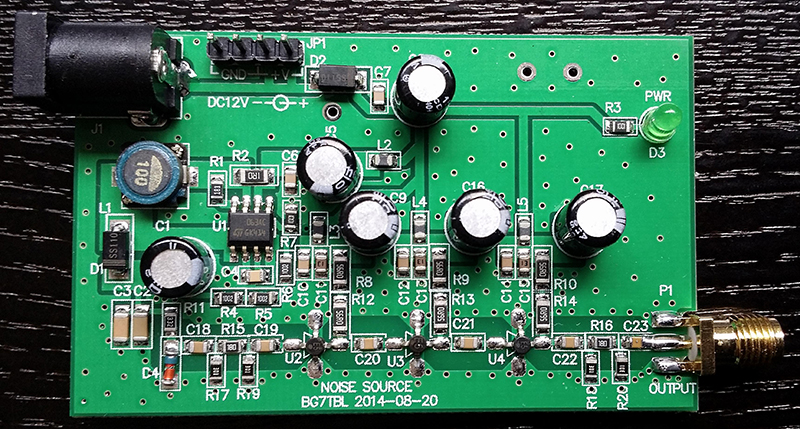Once again the ubiquitous USB TV tuner dongle has proved itself more than capable of doing far more than just receiving broadcast TV. Over on the RTL-SDR blog, there’s a tutorial covering the measurement of filter characteristics using a cheap eBay noise source and an RTL-SDR dongle.
For this tutorial, the key piece of equipment is a BG7TBL noise source, acquired from the usual online retailers. With a few connectors, a filter can be plugged in between this noise source and the RTL-SDR dongle. With the hardware out of the way, the only thing remaining is the software. That’s just rtl_power and this wonderful GUI. The tutorial is using a cheap FM filter, and the resulting plot shows a clear dip between 50 and 150 MHz. Of course this isn’t very accurate; there’s no comparison to the noise source and dongle without any attenuation. That’s just a simple matter of saving some scans as .csv files and plugging some numbers in Excel.
The same hardware can be used to determine the VSWR of an antenna, replacing the filter with a directional coupler; just put the coupler between the noise source and the dongle measure the attenuation through the range of the dongle. Repeat with the antenna connected, and jump back into Excel.
















This is great! Speaking of a VSWR measurement device, anyone have a source for an inexpensive directional coupler good through 250 MHz or so? If the “usual online retailers” would offer one of those as they do the BG7TBL, I’d be a happy nerd!
Correction, such directional couplers are plentiful on ebay (made by Mini-Circuits, no less) at price points not exceeding that of the BG7TBL. For some reason I was remembering them being a bit more expensive.
I’ll go crawl back under my rock now.
Yes, this is really neat for being COTS cost effective for sure.
Sometimes you can even find great deals on the NARDA, KRYTON and other brand directional couplers for higher frequency applications. There is even the potential to use a cheap “tap” as a directional coupler if you read into the RTL-SDR tutorial.
Some other tests using the Directional Coupler and RTL-SDR: https://www.rtl-sdr.com/poor-mans-spectrum-analyzer-with-an-rtl-sdr-and-noise-source/
Finally, the most recent I’ve found which alone wouldn’t be a bad write up for using the TV Antenna Tap as I noted above: https://www.rtl-sdr.com/using-a-tv-antenna-tap-as-a-directional-coupler-for-antenna-measurements-with-an-rtl-sdr/